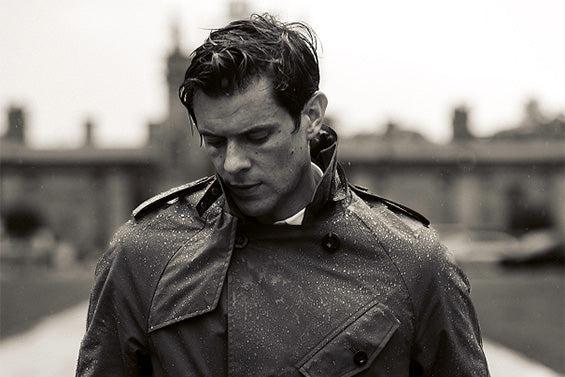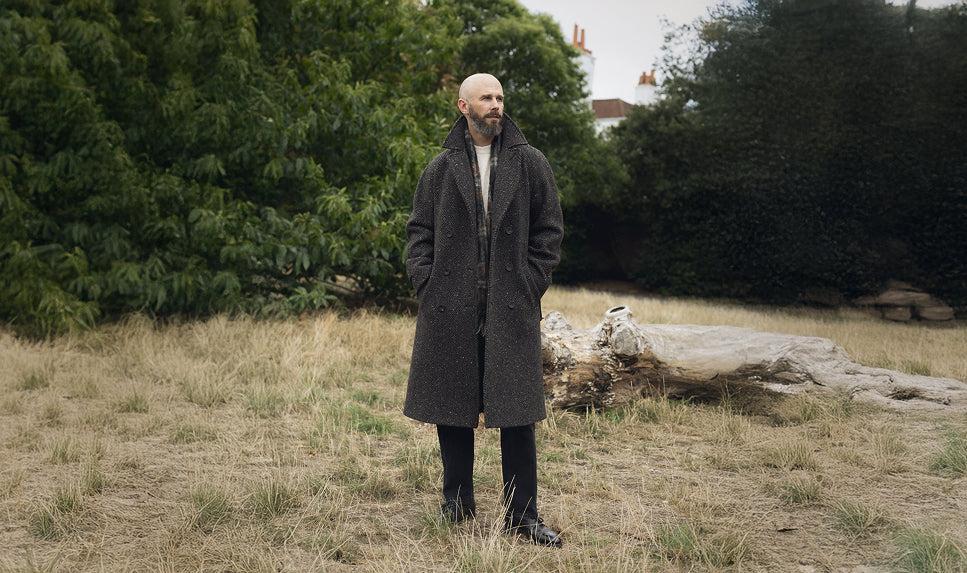
There are coats made for walking the city, and then there are coats made for leading from the front.
The General’s Overcoat belongs firmly in the latter camp, a hardwearing, highly engineered piece of outerwear, rooted in military tradition and built with the same discipline it was inspired by.
At its heart is cavalry twill, a cloth originally developed in the mid-19th century for mounted officers in the British Army. Favoured from the late Victorian era through both World Wars, cavalry twill was engineered to withstand field manoeuvres and long hours in the saddle. Known for its tight diagonal weave, cavalry twill is thick, robust, and naturally shower resistant. Its tightly packed worsted yarns provide both resilience and drape, allowing for strength without stiffness, and warmth without excessive weight.


Our cavalry twill is woven by Alfred Brown; a 6th generation mill in Yorkshire that has been producing fine worsteds since 1915. Using a blend of traditional shuttle looms and modern finishing techniques, their cloth is woven from combed wool yarns in a 2/2 twill construction, with two yarns passing over and under in both the warp and weft. This results in the fabric’s distinctive ribbed texture and exceptional durability. The finish is crisp but not coarse, with a subtle sheen and a densely woven handle that shrugs off light rain and wind with ease. Like the officers who first wore it, this cloth is built to withstand the theatre of war but refined enough for peacetime dress.

The colour, a deep military navy, nods to the Royal Navy’s original undress uniform introduced in the mid-18th century. First favoured for its low visibility at sea, this deep navy tone became standard issue across multiple military theatres. Today, that same deep navy remains one of the most versatile outerwear shades available, sharp enough for a chalk-stripe suit or flannel tailoring, relaxed enough for selvedge denim and heavy knitwear.
Structurally, the coat is built on a raglan sleeve, first popularised during the Crimean War and named for Lord Raglan, the British general who lost his right arm at the Battle of Waterloo in 1815. Seeking improved mobility for wounded officers, military tailors devised a seamless shoulder construction that reduced friction and allowed a greater range of motion. Today, that same design allows The General’s Overcoat to distribute its weight evenly across the upper body, making it feel substantial but never cumbersome.

At the rear, a wide inverted box pleat offers riding-grade flexibility, a clear nod to its cavalry roots. The belt, reinforced with copper-riveted eyelets and a leather buckle, allows the wearer to cinch the waist with both structure and intent. 100% cashmere-lined patch pockets with oversized flaps echo traditional cavalry kit, with a decadent flourish worthy of a general. Meanwhile, the fly front, real-horn British-made combat buttons, and stud-secure throat latch are all engineered to keep out wind and rain with military-grade efficacy.


Every element of this coat has been refined for field performance. It is showerproof, windproof, and warm, yet fluid in in motion and never stifling due to its slightly oversized cut. It balances weight with wearability, and strength with sophistication, the hallmarks of truly great British outerwear.
The collar is reinforced with Vandyke stitching, a decorative yet functional heritage detail named after 17th-century painter Sir Anthony van Dyck, whose portraits often featured sharply scalloped garments. In tailoring, the stitch adds visual contrast and reinforces stress points. A stud-secure throat tab provides wind defence, and the interior is fully lined in sleek viscose for easy layering. A signature copper piping runs down the inside facing, a rare finish that evokes the ceremonial trim of historic officers’ greatcoats.


The result is not just an overcoat; it is a piece of applied military architecture. Every stitch, pleat, and panel is drawn from centuries of functional design built to the exacting standards once demanded by those who led from the front. While the cavalry may no longer ride, the General’s uniform, and its enduring purpose, lives on.





Leave a comment
This site is protected by hCaptcha and the hCaptcha Privacy Policy and Terms of Service apply.